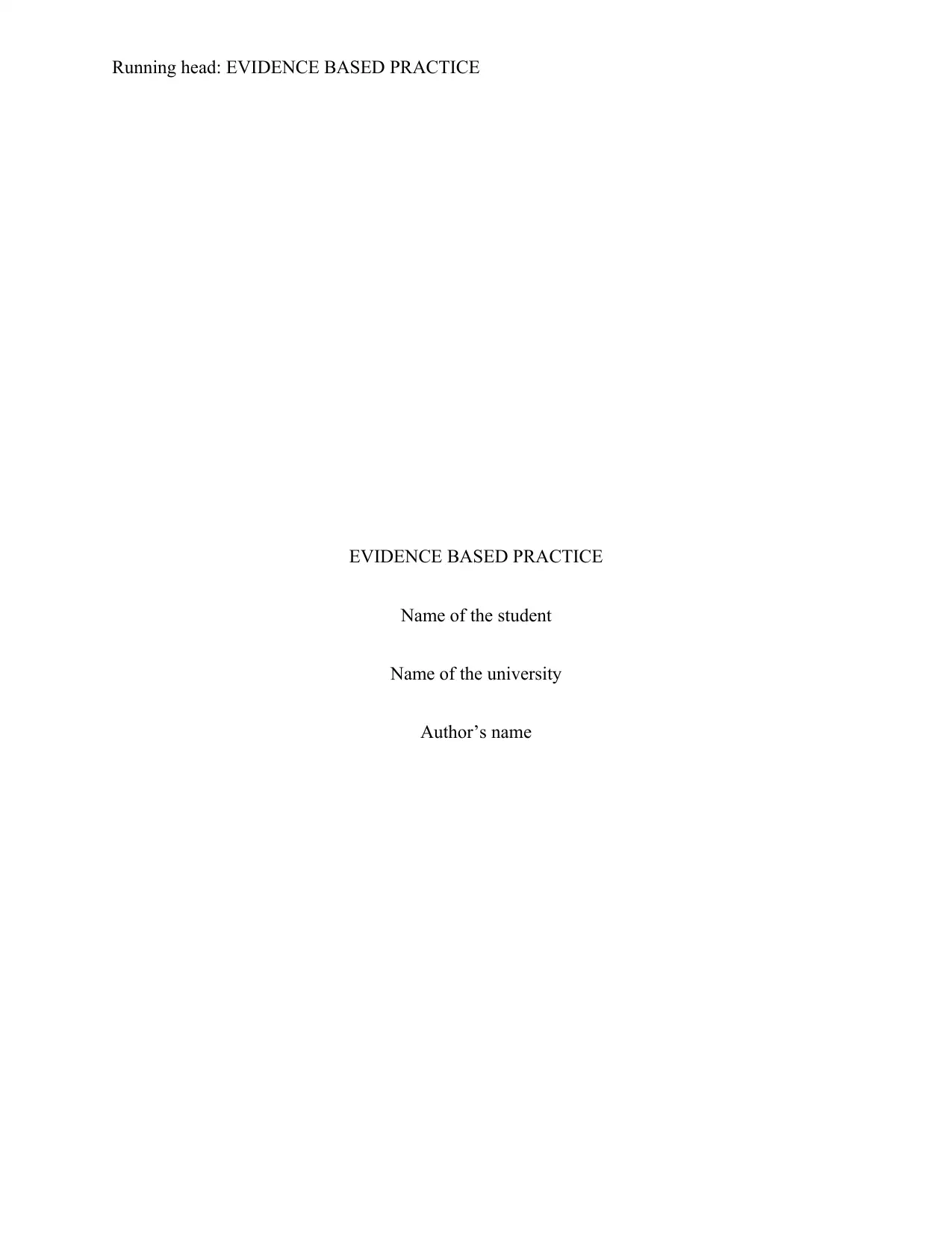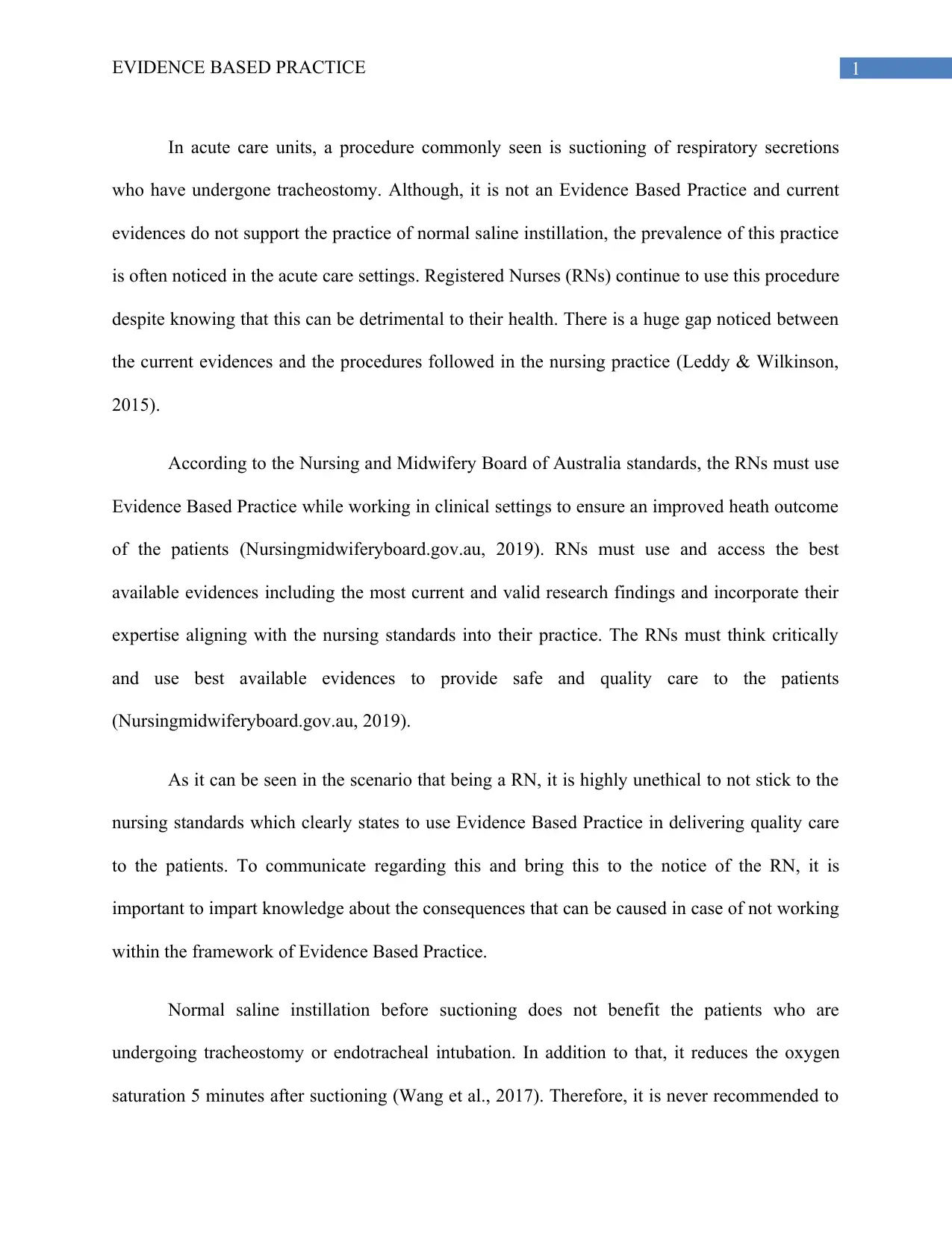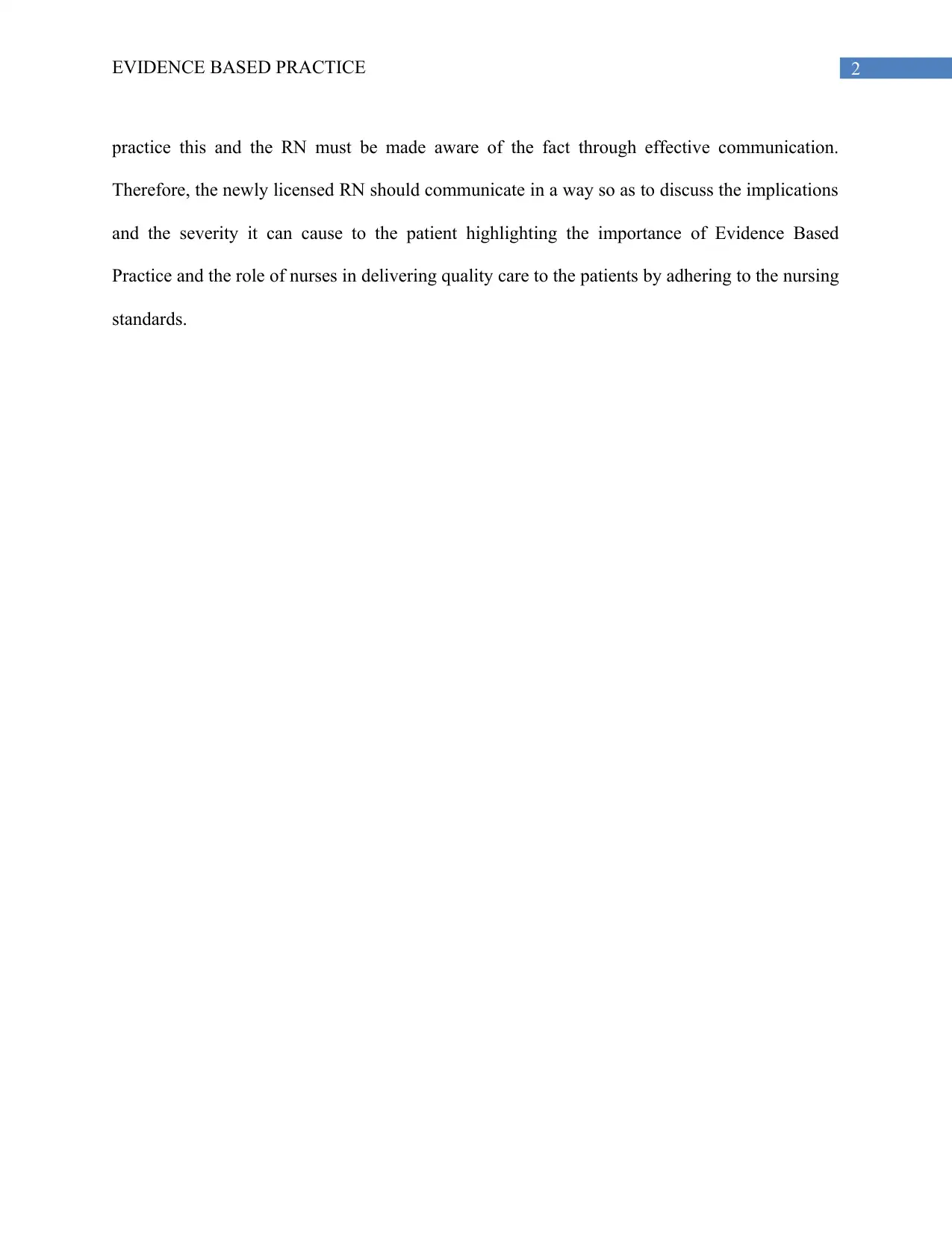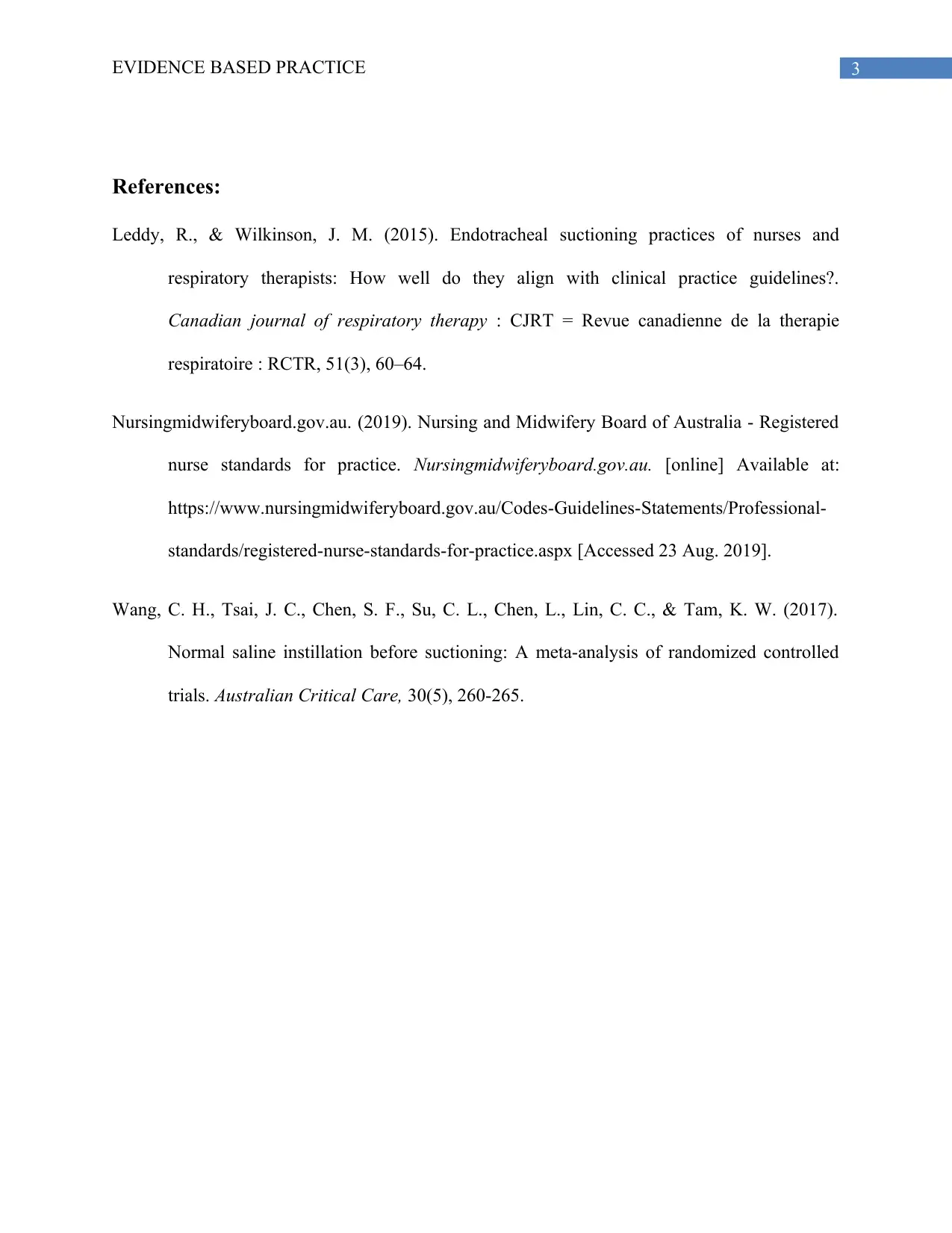Addressing Gaps in Evidence-Based Nursing Practice, M8D1
VerifiedAdded on 2022/09/16
|4
|574
|29
Discussion Board Post
AI Summary
This discussion post addresses a scenario in an acute care setting where a newly licensed Registered Nurse (RN) observes practices that contradict evidence-based guidelines. The focus is on the practice of normal saline instillation before suctioning of respiratory secretions in patients with tracheostomies, which is not supported by current evidence. The assignment requires the student to describe how they would address this gap in nursing practice with their preceptor, emphasizing the importance of adhering to the Nursing and Midwifery Board of Australia standards, which mandate the use of evidence-based practice to ensure improved patient outcomes. The student must communicate the negative consequences of not following evidence-based practice, highlighting the impact on patient health and safety, and promoting the use of current research findings in clinical decision-making. The post also references the negative impact of normal saline instillation before suctioning and the importance of critical thinking in nursing practice.
1 out of 4











![[object Object]](/_next/static/media/star-bottom.7253800d.svg)